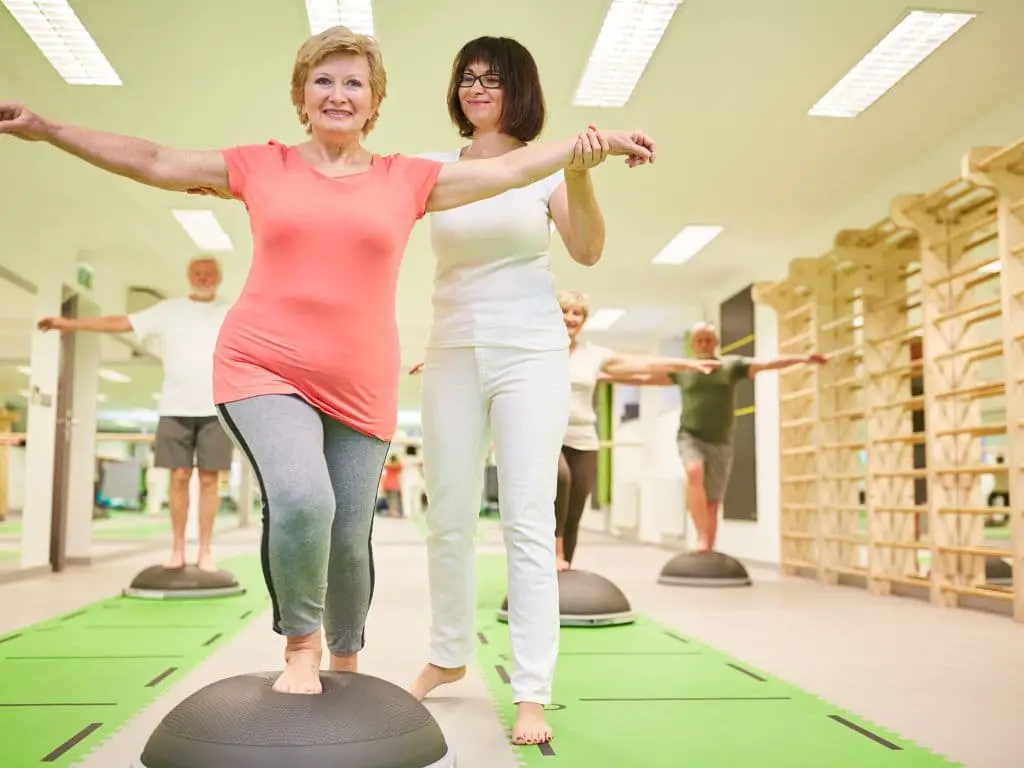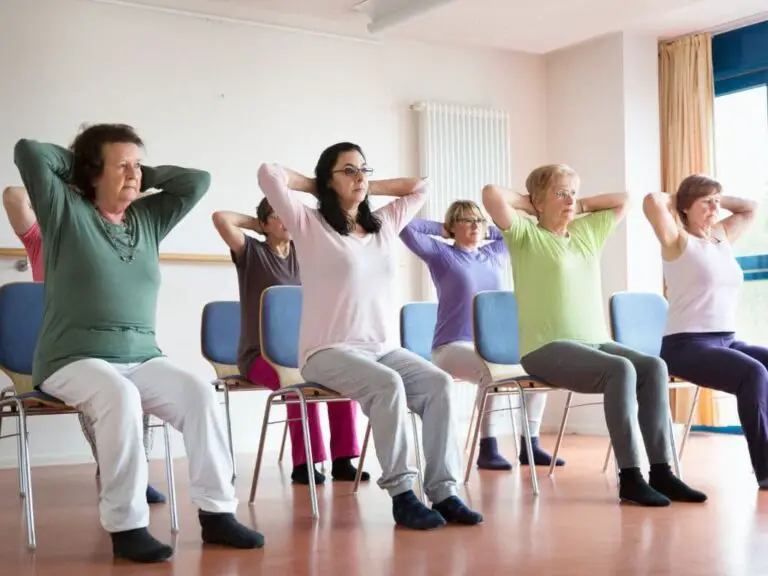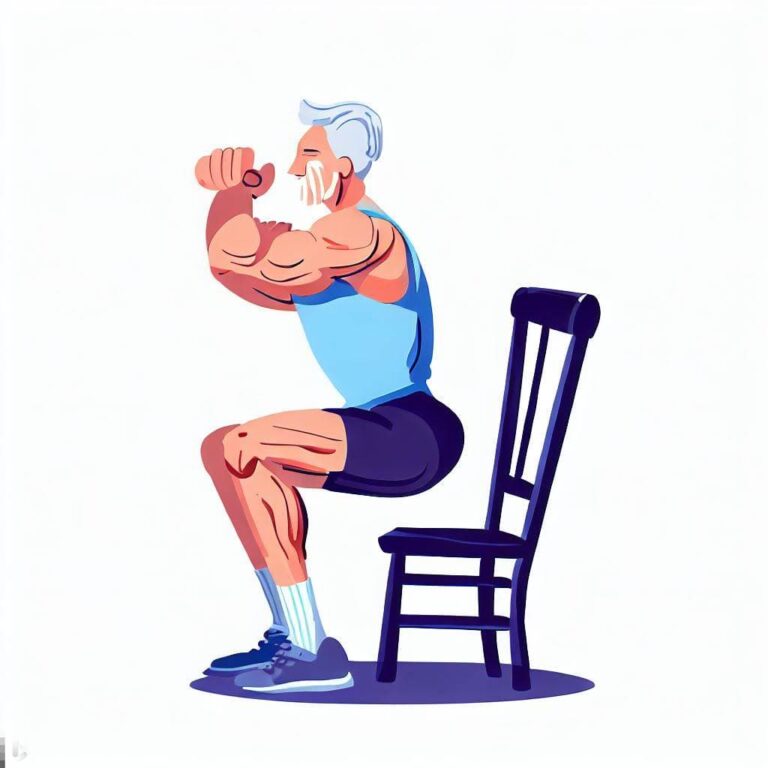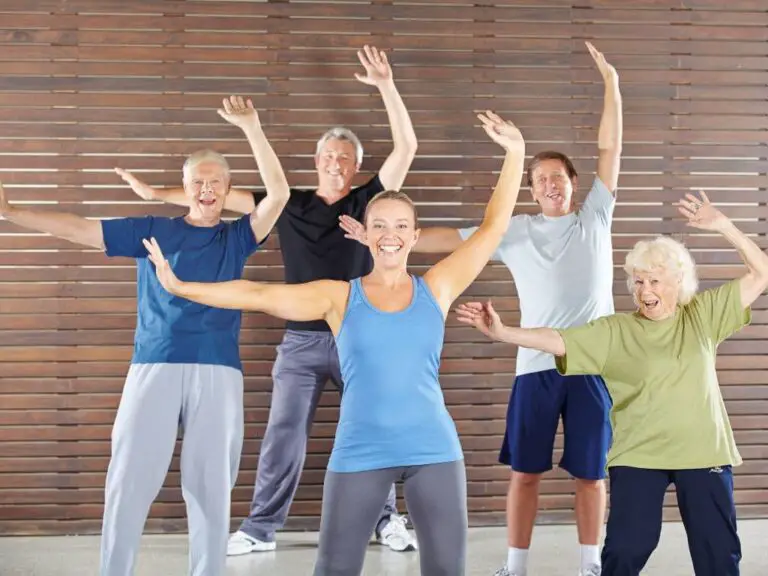How Often Should You Do Balance Exercises?
Falls can be dangerous for seniors, resulting in injuries, reduced mobility, loss of independence and even death. That is why regular balance exercises are crucial for improving stability, enhancing mobility and reducing the risk of falls.
But how often should seniors do these balance exercises and what are some of the most effective ones?
Seniors should perform balance exercises two to three times per week. Initially, they should start with 10-15 minute sessions, gradually increasing the length and frequency over time as their balance improves. Those with significant balance deficits may require longer or more frequent sessions. Consultation with a physical therapist can help determine the appropriate schedule and level of training.
This article will provide tips on the frequency seniors should aim for, the benefits of balance training and some easy balance exercises seniors can do at home.

Why Are Balance Exercises Important for Seniors?
As we age, changes occur that can negatively impact balance and coordination. These include declines in vision, proprioception, muscular strength and reflexes. Certain health conditions, like diabetes, arthritis and Parkinson’s disease, can also increase the chance of losing balance. In addition, side effects from medications like blood pressure drugs, antidepressants or sedatives can lead to dizziness and unsteadiness. The body’s ability to adjust to changes in balance is slower and some of the environmental hazards in a senior’s home, such as throw rugs or slippery floors, put them at greater danger of tripping and falling.
Regular balance exercises counteract many of these effects of aging by improving strength, flexibility, agility and coordination. They also stimulate the body’s balancing systems and improve the speed at which corrections can be made. Balance exercises can incorporate strength training, stretching and practical motions to mimic everyday movements. Including a variety of exercises allows seniors to challenge their balance in different ways.
How Often Should Seniors Do Balance Exercises?
Most experts recommend seniors aim for balance exercises two to three times per week. For seniors who already have good balance, 30 minutes per session is sufficient. Those with more significant balance deficits should aim for longer or more frequent sessions. How often seniors need to engage in balance training depends on factors like their current abilities, general health status and goals for mobility.
As a good rule of thumb, seniors should start with 10-15 minute sessionstwo to three times per week. The length and frequency can be increased gradually over time as their balance improves. It’s important that seniors start with simple exercises first before progressing to more challenging onesso they don’t overwhelm or frustrate themselves. Consulting a physical therapist can help determine the appropriate schedule and level of training.
What Are Some Effective Balance Exercises for Seniors?
Here are 10 balance exercises seniors can do at home to improve their stability and coordination:
1. Heel-to-Toe Walk
This exercise works on gait and challenges the muscles. Put one foot directly in front of the other, touching heel to toe. Focus on posture, engage core muscles and walk across the room for 10 steps before turning around.
2. Leg Lifts
Standing behind a chair, lift one leg a few inches off the ground without holding on. Keep the stance leg bent slightly. Do 10 reps then switch sides.
3. Chair Squats
Stand in front of a chair and lower your hips down towards it, but without touching. Squat as far as comfortable before rising back up. Repeat 10 times.
4. Back Leg Raises
Standing upright, hold onto a chair and slowly lift one leg straight back without leaning forward. Keep hips level. Do 10 lifts then switch sides.
5. Side Leg Raises
Hold onto a chair with both hands to steady yourself. Lift one leg out to the side, keeping toes facing forward. Perform 10 controlled lifts then switch sides.
6. Heel Stands
Rise up on both heels as high as possible, while keeping posture upright. Hold for 10 seconds before lowering heels down. Repeat several times.
7. Toe Stands
Raise up onto toes of both feet while keeping legs straight and body upright. Engage core muscles. Hold for 10 seconds before lowering down. Repeat.
8. Tai Chi
Tai chi incorporates controlled movements, weight shifting and focused breathing to improve balance. Local senior centers may offer tai chi classes.
9. Yoga
Many poses in yoga, like the tree pose, warrior and chair pose, require balance to perform. Yoga also improves strength and flexibility.
10. Pilates
The controlled movements of Pilates, like leg circles and one leg stretches, enhance balance, core stability, posture and coordination.
What Are the Benefits of Regular Balance Exercises for Seniors?
Incorporating regular balance training provides seniors with many benefits that help maintain their health, independence and quality of life.
1. Improved Stability and Mobility
Balance exercises enhance stability by strengthening the ankles, knees and hips and improving coordination. This allows seniors to walk steadier, with less wobbling or veering. Their range of motion and mobility increases as their flexibility and posture improve.
2. Reduced Risk of Falls and Injuries
As balance, strength and reaction time become better, seniors are less likely to lose their balance or fall. The risk of suffering broken bones or head injuriesdue to falls is significantly lowered.
3. Enhanced Coordination and Flexibility
Movements and adjustments required to maintain balance engage the core and leg muscles while also enhancing coordination between them. Range of motion for joints and overall flexibility improves with regular stretching.
4. Increased Strength and Endurance
Many balance exercises also provide strength training and aerobic benefits. Seniors gain muscular strength and endurance which further aids their stability and mobility.
5. Better Overall Health and Well-being
The combination of improved balance, strength, flexibility and protection from falls contributes to seniors’ overall health and quality of life. Remaining active and independent boosts emotional well-being too.
What Should Seniors Do if They Start to Feel Dizzy or Unsteady?
Seniors may occasionally feel lightheaded, dizzy or unsteady, especially when attempting challenging new exercises. Instead of trying to push through these sensations, they should stop the exercise immediately and sit down. Take slow, deep breaths until the dizziness passes. Make sure to drink water and have something to eat, as low blood sugar could be the culprit.
If dizziness persists or occurs frequently, seniors should speak to their doctorto identify potential causes like medication side effects or underlying medical conditions. Some modifications like performing exercises while seated or holding onto support can make training safer. It’s also essential seniors exercise in an open area free of tripping hazards and wear proper footwear. Having someone spot them as they exercise adds an extra precaution against falls.
Conclusion
Engaging in regular balance exercises provides tremendous benefits for seniors, from enhancing their stability and flexibility to lowering their risk of dangerous falls. Aim to incorporate a variety of balance challenges into the weekly routine, starting slowly and progressing gradually. Along with other healthy lifestyle habits, balance training can help seniors remain active and independent for years to come.
Frequently Asked Questions
-
How often should you do balance exercises?
YSeniors should aim to do balance exercises two to three times per week. Initially, they should start with 10-15 minute sessions, gradually increasing the length and frequency over time as their balance improves. Those with significant balance deficits may require longer or more frequent sessions. Consulting a physical therapist can help determine the appropriate schedule.
-
What muscles are tight if you can’t cross your legs?
It’s possible to have tight pelvic floor muscles. Tight pelvic floors can lead to tension in your surrounding pelvic and hip muscles. Duvall explains that tightness in the pelvic floor muscles could pull your tailbone under, making it more difficult to stand straight when you are cross-legged.
-
Why do elderly legs give out?
A weakness of the legs in an elderly relative doesn’t usually indicate a rare disease. It’s more common to be a vitamin deficiency. If you feel a sudden feeling of weakness, such as sharp pain or loss of bladder or bowel control or other signs, it is important to seek immediate medical attention.
-
Why can’t I balance on one leg with my eyes closed?
Standing on our feet, or standing with one foot open and our eyes closed, we are able to use information from both our eyes to help us balance. It is more difficult to close your eyes because it removes the main source of information.
-
Why does my lower back and hips hurt when I sit?
Hip pain can result from a pinched nerve or damage to your lower back. Your sciatic nerve runs from your lower back through your hips and down to the legs. Sciatica occurs when the nerve is pinched, or otherwise damaged. This can lead to sharp pain around your hips, buttocks, and hips when it is pressed or damaged.
-
How long does it take to regain lost flexibility?
First results can be noticed immediately or within 3-4 lessons depending on how one feels about their bodies and what they have done in sports. However, these results may not always match expectations. I would say that after six weeks of consistent practice or daily, you should see results.
-
Why can’t old people touch their toes?
If your feet are not touching the ground, this is a sign your body may be too rigid. For proper blood circulation and muscle flexibility, you need to be flexible. Injuries can happen in sports and everyday life if we’re not flexible enough.
-
Should you lock your knees when touching your toes?
Flex or activate your quads to straighten your legs. Keep your legs straight without locking your knees. To help get to the ground, other than the microbend you shouldn’t bend your knees.
-
Can a very inflexible person become flexible?
It works like this: Certain people are more flexible than other people. If you are open to learning and willing to work hard, even the most rigid person can be flexible. You can improve your flexibility at any age. All you have to do is believe you can.
-
Can B12 help with balance?
Inadequate coordination. A B12 deficiency can cause ataxia (or impaired balance and coordination). B12 deficiencies can lead to difficulty in walking or balancing.






